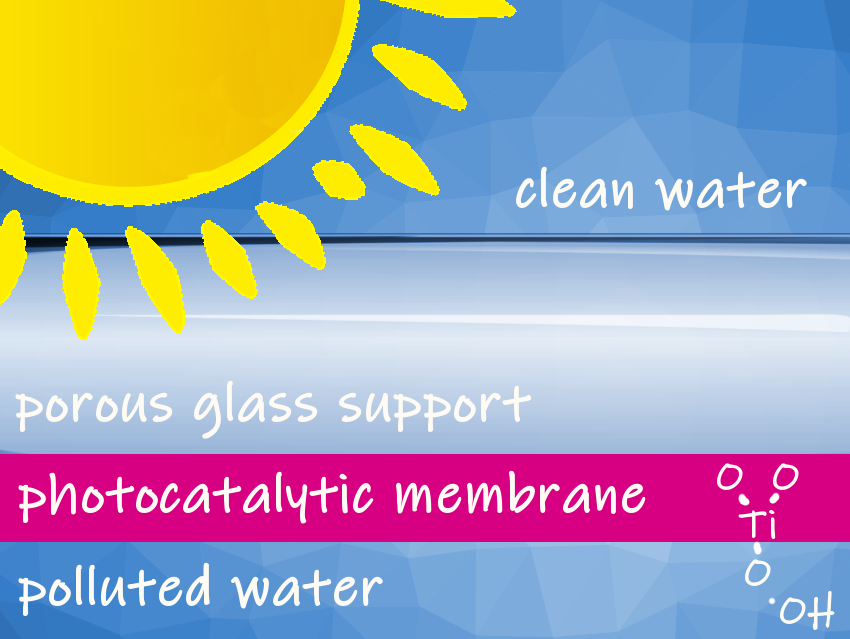Membranes can remove contaminants from drinking water but require routine cleaning with harsh chemicals that are less easily accessible, handled, and disposed of in remote communities. To remedy this, the membrane surface can be modified to make it less prone to fouling. Active antifouling functions can also be achieved by modifying the membrane surface with photocatalytically active titanium dioxide. Such surfaces have the so-called “self-cleaning” property because they can prevent fouling through photocatalytic reactions and induce superhydrophilicity when exposed to light of the right wavelength and intensity, including sunlight.
Mikel C. Duke, Victoria University, Australia, and colleagues have developed a non-chemical solar cleaning alternative in which simulated sunlight is directed through a light-transmitting porous glass substrate onto a thin TiO2 photocatalytic membrane coating. Solar cleaning was shown to increase the time required for chemical cleaning by 4.5 times and reduced the filter pump power electricity demand by 50 %. The scientists attributed this to the formation of hydroxyl radicals and subsequent oxidation of organic contaminants, and the photocatalytic superhydrophilic surface stimulation of TiO2 surfaces. Both effects act together to reduce the irreversible attachment of organic impurities to the surface. Although the light transmission through the membrane substrate was about 10 % on average, it was sufficient to induce a photocatalytic reaction on the membrane surface.
The membranes were prepared by dip-coating sintered glass substrates with a suspension of Degussa P25 TiO2 in water and sodium alginate, followed by air-drying and sintering. Successful uniform coating of TiO2 on the substrate was confirmed by a combination of gravimetric and visual tests, as well as scanning electron microscopy (SEM) and energy dispersive spectroscopy (EDS).
Surface water for testing was collected from Boulder Creek, CO, USA, at a depth of 10–20 cm below the water surface. Visually, the collected water appeared largely clear and colorless, with visibly large particle suspensions. The antifouling ability of the membrane was evaluated by recording the transmembrane pressure (TMP).
According to the researchers, the membrane has the potential to be used in remote communities where the use of chemicals in water treatment is a challenge, with sunlight helping to keep the membrane functioning and producing clean water for the community. Future studies can explore the potential for improved disinfection and antifouling functions on a wider range of organic contaminated water supplies.
- Sunlight-Transmitting Photocatalytic Membrane for Reduced Maintenance Water Treatment,
Lavern T. Nyamutswa, Blair Hanson, Dimuth Navaratna, Stephen F. Collins, Karl G. Linden, Mikel C. Duke,
ACS EST Water 2021.
https://doi.org/10.1021/acsestwater.1c00073




